Exploring and Understanding the Science behind the Stability and Control of Airplanes
Airplanes operate in a three-dimensional space, enabling them to move freely in the air. This freedom introduces complexities in terms of stability and control. The three primary movements in airplanes are roll, pitch, and yaw.
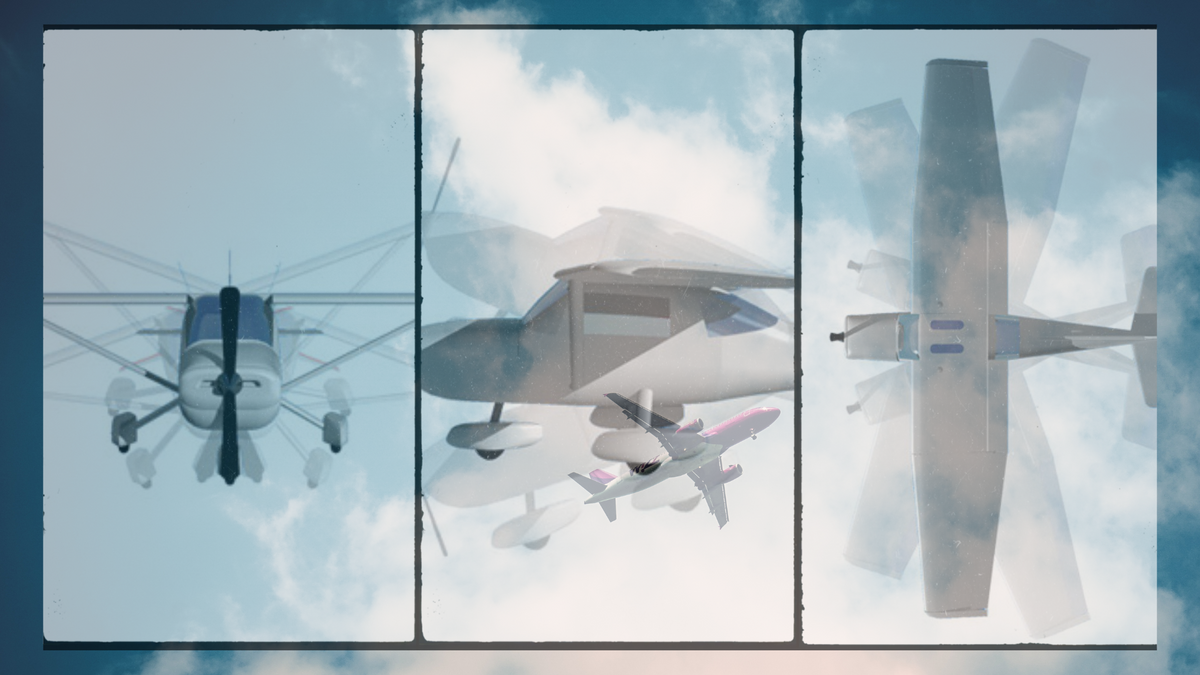
When it comes to transportation, various vehicles offer unique challenges and characteristics. Airplanes, for instance, operate in different environments and exhibit distinct stability and control mechanisms. In this blog, we will delve into the complexities of stability and control in both airplanes and boats, with a focus on their respective dimensions of movement. We will explore the concepts of roll, pitch, and yaw, and examine how these movements impact the stability and control of these vehicles.
Stability and Control in Airplanes: Airplanes operate in a three-dimensional space, enabling them to move freely in the air. This freedom introduces complexities in terms of stability and control. The three primary movements in airplanes are roll, pitch, and yaw.
Roll
Roll refers to the rotation of an airplane around its front-to-back axis. It is akin to the tilting motion of a car during a turn. The roll motion is controlled by the ailerons, which are control surfaces located on the wings. By deflecting the ailerons, pilots can increase the lift on one wing while decreasing it on the other, resulting in a rolling motion.
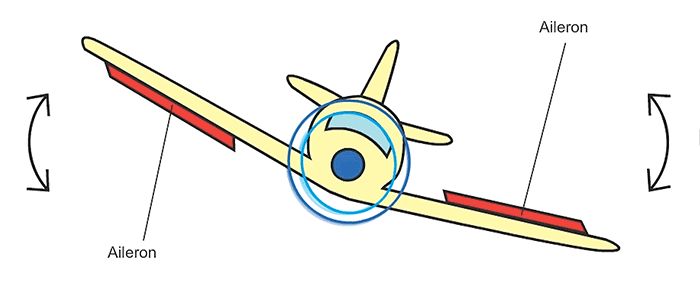
The Ailerons: Controlling Roll
The ailerons are control surfaces located on the outer rear edge of each wing of an airplane. They play a crucial role in controlling the roll motion of the aircraft. Ailerons can move in opposite directions, one going up while the other goes down. By doing so, they manipulate the lift generated by the wings, decreasing it on one side while increasing it on the other. This differential lift causes the airplane to roll to the left or right.
To initiate a turn, the pilot uses the ailerons to tilt the wings in the desired direction. When the pilot wants to roll the aircraft to the left, the left aileron moves upward, reducing lift on the left wing and causing it to drop. Simultaneously, the right aileron moves downward, increasing lift on the right wing, which rises. This differential lift creates a rolling motion to the left. By manipulating the ailerons, the pilot can control the amount and rate of roll, enabling precise maneuvering of the aircraft.
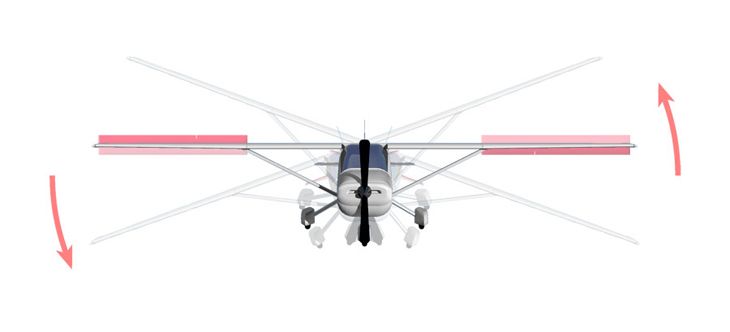
Pitch
Pitch involves the rotation of an airplane around its side-to-side axis. It is comparable to the up-and-down motion of a seesaw. The pitch motion is controlled by the elevator, a control surface typically found on the tail section of the airplane. Adjusting the elevator alters the airflow over the horizontal stabilizer, influencing the pitch of the aircraft.
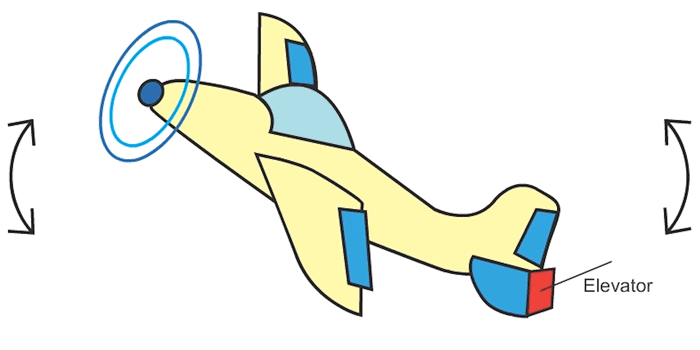
The Elevator: Controlling Pitch
Located on the horizontal tail surface of the airplane, the elevator is responsible for controlling the pitch motion. The elevator moves up and down, altering the lift generated by the tail. By tilting the elevator upwards, the lift on the tail decreases, causing the nose of the airplane to pitch up. Conversely, tilting the elevator downwards increases the lift on the tail, resulting in the nose pitching down.
Controlling the pitch of the aircraft is vital for maintaining a desired altitude and adjusting the angle of climb or descent. When the pilot wants to climb, they pull back on the control column, which raises the elevator, decreasing the lift on the tail and pitching the nose up. To descend, the pilot pushes the control column forward, lowering the elevator, increasing tail lift, and pitching the nose down.
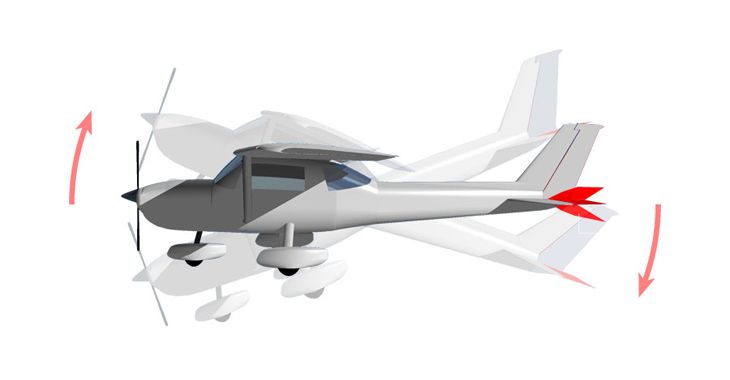
Yaw:
Yaw denotes the rotation of an airplane around its vertical axis. It resembles the left-to-right swaying motion of a boat. The yaw motion is controlled by the rudder, a control surface located on the vertical stabilizer. By manipulating the rudder, pilots can induce a yawing motion, causing the airplane to rotate left or right.
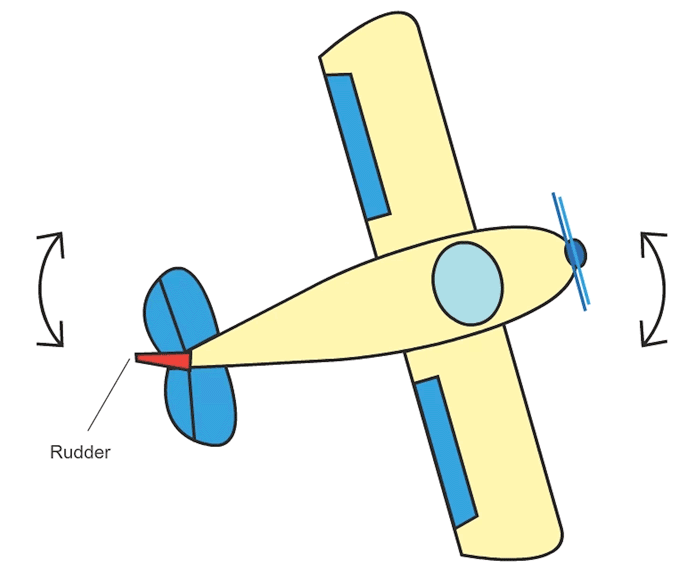
The Rudder: Controlling Yaw
The rudder is located on the vertical tail fin of an airplane and is responsible for controlling the yaw motion. Yaw refers to the left or right swiveling motion of the aircraft around its vertical axis. The rudder can move from side to side, causing the tail of the airplane to be pushed in a left or right direction.
The primary purpose of the rudder is to counteract adverse yaw, which occurs during aileron input. When the pilot uses the ailerons to roll the airplane, there is a tendency for the aircraft to yaw in the opposite direction. The rudder helps counteract this yawing motion by applying a force in the desired direction. For example, when the pilot initiates a left turn using the ailerons, the rudder can be used to apply a force to the right, opposing the adverse yaw and maintaining coordinated flight.
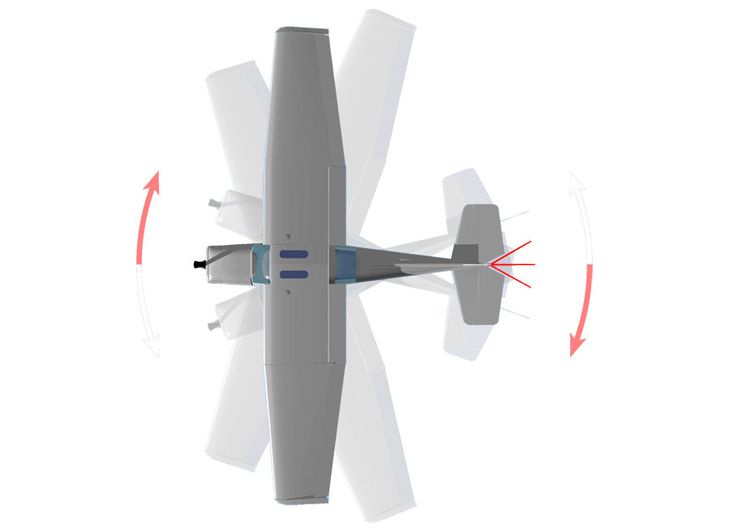
The control surfaces in an airplane, namely the ailerons, elevator, and rudder, play integral roles in maintaining stability and control during flight. The ailerons control the roll by manipulating lift on the wings, the elevator controls pitch by altering lift on the tail, and the rudder controls yaw by swiveling from side to side. These control surfaces, operated by the pilot, allow for precise and controlled maneuvering of the aircraft in all three dimensions.
Understanding the dynamics of stability and control in different vehicles is essential for pilots, boaters, and enthusiasts alike. While airplanes navigate through the air, using roll, pitch, and yaw to maintain stability and control, boats operate on water, utilizing similar principles within a two-dimensional space. Both vehicles require skilled operators who can manipulate the control surfaces effectively to ensure safe and efficient navigation.
Whether you're soaring through the sky in an airplane or cruising the open waters in a boat, the intricate interplay of stability and control mechanisms adds to the allure and complexity of these remarkable modes of transportation.
Happy Learning & Happy Flying!